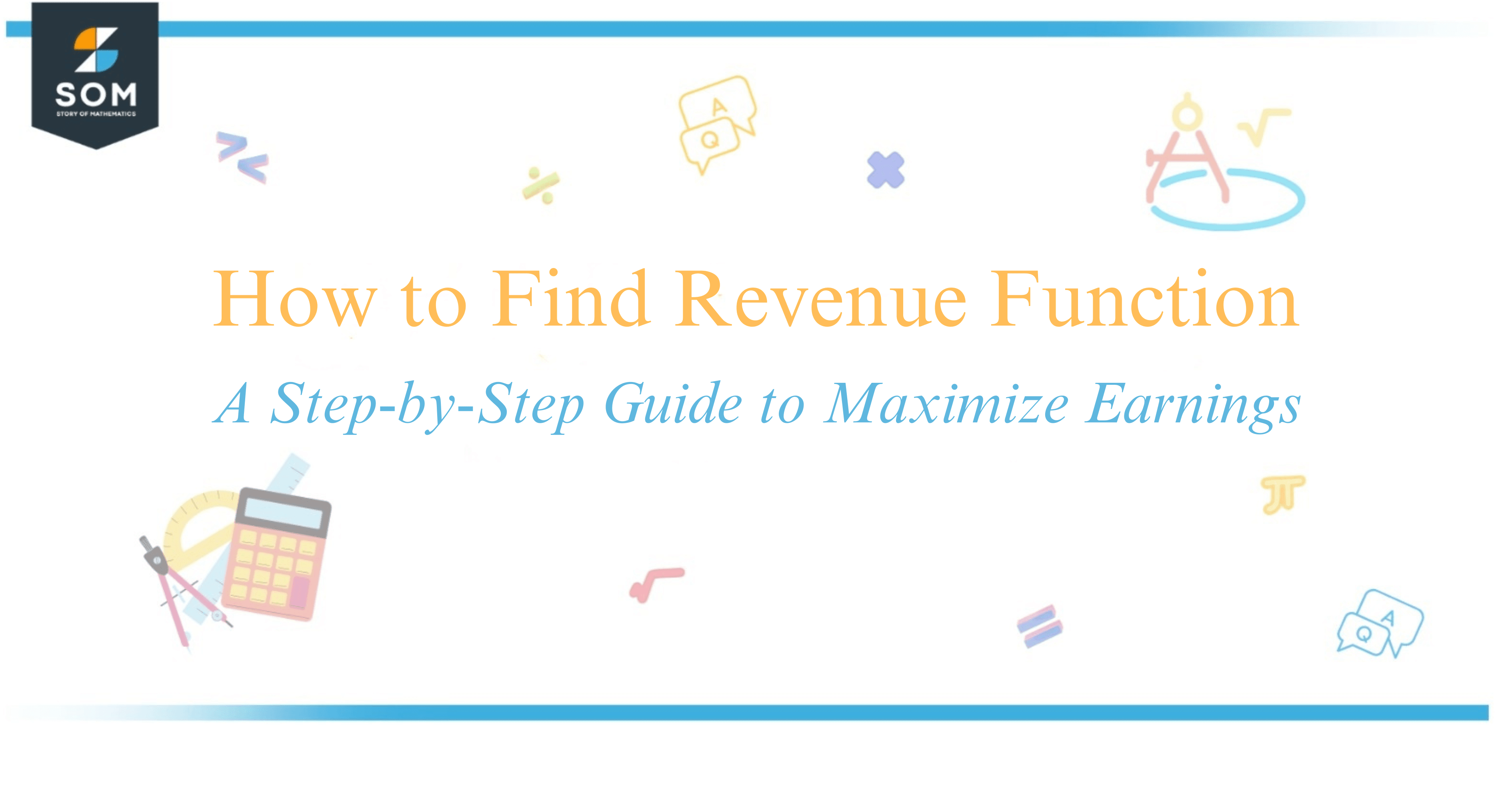JUMP TO TOPIC

To find the revenue function, I first understand that revenue is the total income generated from selling goods or services.
In its simplest form, the revenue function is expressed as $R(x) = p \cdot x$, where ( R ) represents the revenue, ( p ) stands for the price per unit, and ( x ) denotes the number of units sold.
For businesses that deal with only one product or service, finding the revenue function is straightforward. If I’m selling handmade candles for \$10 each, my revenue function would be ( R(x) = 10x ).
Applying a revenue function in real-world applications involves understanding market dynamics, as the price can vary with the quantity due to factors like bulk discounts or demand shifts.
For example, if the price decreases with an increase in quantity sold, I’d represent this relationship with a decreasing function for ( p ) in terms of ( x ). Staying updated with how the revenue function works, and its derivations means I can forecast and make better-informed business decisions.
Stick around to see exactly how different types of revenue functions can be derived and applied, tailoring them to complex market scenarios where multiple products, varying pricing strategies, or fluctuating market conditions come into play.
Steps Involved in Calculating Revenue
Calculating the revenue function is essential for a company to understand its sales performance and forecast future profits. It involves a straightforward process based on common economic and mathematical concepts.

Define the Variables
Firstly, identify the variables:
- p: Price per unit – What the company charges for one unit of the item or service.
- q: Quantity – The number of units sold.
Model the Revenue Function
Next, we need to construct an adequate model for the revenue function. It can usually be represented by the equation:
$$R(q) = p \times q$$
Where:
- R(q): Revenue as a function of quantity (q)
- p: Price per unit
- q: Number of units sold
Include Costs and Profits
For a more complex analysis, consider the interaction between the revenue function and other financial functions:
| Function Name | Symbol | Equation | Description |
|---|---|---|---|
| Cost Function | C(q) | [ C(q) ] | Total economic and accounting costs associated with production |
| Profit Function | $\pi(q)$ | $ (\pi(q) = R(q) – C(q) ) $ | Profits are the revenue minus total costs |
Applying Calculus
To maximize revenue, leverage calculus by finding the first derivative of the revenue function and set it equal to zero:
$$R'(q) = 0 $$
Solving this equation will give us the quantity that maximizes revenue.
Consider Multiple Products and Price Levels
If a company sells multiple products or at different prices, the function becomes:
$$ R = \sum (p_i \times q_i) $$
Here $p_i$ and $q_i$ represent the price per unit and quantity sold of each item, respectively.
Remember that the domain of the function is the range of all possible quantities that can be sold, and it varies based on scenarios, market demand, and production capacity.
Strategies to Maximize Revenue
To maximize revenue, I must understand the relationship between the price per unit of an item and the quantity sold. Supply and demand greatly influence this relationship. I start with determining the most profitable ratio of these variables by analyzing selected sales volumes and their corresponding revenues.
The revenue function often takes on a quadratic function, which is generally represented as:
$$ R(x) = ax^2 + bx + c$$
where ( x ) is the quantity of items sold, and ( a ), ( b ), and ( c ) are constants that represent aspects of production and sales. The goal is to find the maximum value of this function, which indicates the optimal price and quantity for maximum revenue.
Since total revenue is the product of the price and the quantity sold, I set up the revenue function based on historical data or market analysis. The maximum revenue occurs at the vertex of the parabola, where the derivative of the revenue function equals zero, $ R'(x) = 0 $.
To calculate this derivative:
$$R'(x) = 2ax + b$$
I then set the derivative equal to zero and solve for ( x ) to find the maximum revenue point.
| Step | Operation | Mathematical Expression |
|---|---|---|
| 1 | Derive Revenue Function | $R'(x) = 2ax + b $ |
| 2 | Find Maximum Revenue Point | ( 0 = 2ax + b ) |
This point also helps in determining the break-even point and any potential loss, which are essential in economic profit planning. By identifying the unit cost, I ensure that the price exceeds this cost beyond the break-even point to ensure profitability.
By incorporating materials cost, level of production, and unit cost into my planning, I can fine-tune the price to maintain a profitable balance. Identifying the optimal price is imperative as it directly affects both the profit margins and maximum revenue.
Conclusion
I’ve walked through how to identify and construct a revenue function, focusing on its relevance in making informed business decisions.
Remember, the general formula is $R(q) = p(q) \times q $, where ( R ) represents the total revenue, ( p(q) ) is the price function, and ( q ) signifies the quantity of goods sold.
Whether you’re dealing with a single product or multiple products, understanding the dynamics of revenue functions can help anticipate financial outcomes.
Cost functions and profit functions are closely tied to the revenue function. Linking them together gives a broader financial picture; for instance, the net income ( NI ) is determined by ( NI = TR – TC ) where ( TR ) is the total revenue and ( TC ) represents total costs.
It’s essential to review real-world scenarios to apply this knowledge practically. If I were selling lemonade, and each glass was sold at \$0.50, my revenue function would be ( R = 0.50x ).
This simplicity can also scale up to more complex scenarios involving multiple products with varying prices.
By grasping these concepts, I can make strategic pricing and production decisions to bolster business health. I encourage continued learning and application of these principles for effective financial planning and analysis.
